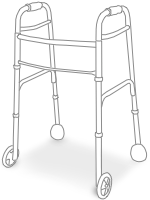Strategic Ways to Save Money
Proven tactics for keeping more cash in your pocket (without disrupting your life).


Let's get real for a moment. Saving hurts. You work hard for your money and stashing it away instead of spending it on the things you want right now takes discipline. All those numbers, formulas and acronyms can be overwhelming. Not to mention, retirement seems so far away, it's easy to ignore. But saving now buys you freedom later. It guarantees the life you want when the 9-5 routine is finished. The good news is that it's not as complicated as it seems and just by reading this, you're moving in the right direction. Here's what you need to know.
Start Immediately


It makes sense that the sooner you start saving, the more your money you'll have. But just how much will shock you thanks to compounding interest. A 22-year-old with an annual salary of $40,000 who puts 10 percent into a 401(k) and gets a three percent employer-matching contribution could retire with approximately $1.7 million at age 65. And that's without any raises or increased contributions over forty years. If you wait until you turn 32 to begin saving, however, the same contributions will only amount to $780k. Ten years just cost you about a million dollars.
Don't Rely on Social Security
Today, 59% of retirees rely on Social Security to be a major part of their monthly income. But the New York Times reports that the Social Security trust fund could be exhausted sometime around 2037—long before most of us retire. There will likely be some kind of government-provided income, but most financial planners suggest that to live comfortably, you'll want to save enough to provide yourself an annual income that's 80 percent of what you were making when getting a regular paycheck.
Money magazine has a handy retirement savings calculator so you can easily figure out how much money you'll need by the time you want to retire and how much you'll be required to save in order to reach your goal.
Save Money and Reduce Your Taxes
Your 401(k) is an easy way to save for retirement through payroll deductions at work. And these tax-free contributions can reduce your taxable income. For example: If you're in the 25 percent tax bracket and contribute $100 to your 401(k), you'll save $25 in taxes. Your retirement account grows by the entire $100, but your paycheck only decreases $75.
No 401(k)? No Problem
If you work for yourself or your company doesn't have a 401(k) program, you can set up an individual retirement account, known as an IRA. You can start one at anytime at almost any bank or investment company. The "Roth" IRA is a common account and is great for young savers. Unlike the 401(k) or a traditional IRA, you don't get a tax break for your contributions, but the good news is that when you retire, your withdrawals are 100 percent tax-free.
Don't Turn Down Free Money
If we told you we'd put $5 into your savings account for every $10 you put in, you'd be crazy not to take the deal, right? Most companies offer a 401(k) match program. Contribute the maximum amount to your account. Otherwise it's like throwing away free money from the company.
Don't (Really) Worry About the Stock Market


You don't need to know much about investing or the stock market in order to save for retirement. All you need to do is make the contributions. Most plans offer "target-date" mutual funds based upon the year you plan to retire. These automatically adjust their investments over time; they start out aggressive (while you're young and far from retirement) and become more conservative as the target date approaches. But you can always get in touch with your investment company to talk about ways to allocate your funds in order to take advantage of long-term growth.
Money magazine has a handy retirement savings calculator so you can easily figure out how much money you'll need by the time you want to retire and how much you'll be required to save in order to reach your goal.